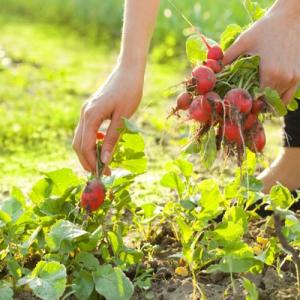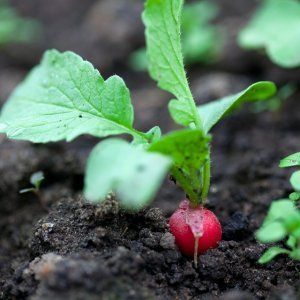What can be planted after radishes in July, and what crops should not be planted
Lovers of fresh radishes usually harvest their first harvest in June. Then you have to choose what to plant in the vacated beds, and not forget about crop rotation.
Why it is important to follow the rules of crop rotation and what can be planted after radishes in July, you will learn from this article.
Why is it important to follow the rules of crop rotation?
Crop rotation is the alternation of crops grown in the garden, based on scientific research, taking into account the time and place of sowing.
It is necessary to take these rules into account when planting various plants for several reasons:
- Each crop is very sensitive to its own root exudates that accumulate in the soil. Some plants emit toxic substances that harm plantings of related crops.
- Crop rotation prevents the accumulation of pathogens and pests specific to a particular type of vegetable.
- Crops consume nutrients in different amounts and from different layers of the soil, so proper rotation allows you to maintain the optimal amount of nutrients in the soil.
What are the consequences of ignoring crop rotation rules?
Vegetables do not tolerate a lack of crop rotation very well, producing a meager harvest or one affected by pests.
The negative consequences of non-compliance with crop rotation include:
- accumulation of toxic root exudates on the site;
- depletion of topsoil;
- threefold increase in weed infestation;
- soil erosion;
- spread and accumulation of diseases and pests characteristic of a particular type of crop.
What can you plant after radishes in July?
If there is a small plot, gardeners try to use it as efficiently as possible. Therefore, in July, the empty radish bed is sown again.
Most suitable crops
After early radish, it is recommended to sow in the same place peas, onions, greens, carrots, spinach, zucchini, cucumbers (seedlings) and lettuce (except watercress).
In July, early ripening varieties of these crops are planted so that they have time to produce a harvest before the onset of cold weather.
When selecting lettuce seeds, choose varieties suitable for summer sowing, since spring varieties grown in July will be tough.
In summer, carrot seed germination is better than in spring, and the fruits collected in autumn will be sweet.
One of the best options is to sow peas or beans. They have no common enemies with radishes, and legumes also enrich the soil. After them, you can plant any plants next year.
Is it possible to plant dill and garlic?
When a radish bed is freed up, gardeners most often grow greens and herbs on it.
Parsley and dill have diseases and pests that are not the same as those that affect radishes, so it is safe to plant them in the same place. Dill sown in July grows lush and juicy, unlike dill planted in the spring.
But for garlic, radishes are considered an unacceptable predecessor. Garlic can become infected with diseases remaining in the soil or be attacked by pests. To plant it, it is optimal to choose beds where legumes, cucumbers, zucchini, and pumpkins previously grew.
What not to plant
After harvesting radishes, it is strictly not recommended to plant them again in the same place, like other vegetables suffering from common diseases and pests:
- radish;

- rutabaga;
- any types of cabbage;
- turnip;
- daikon;
- watercress;
- onion;
- garlic
Radishes can be returned to the same bed no earlier than after three years.
How to prepare beds for reseeding
After harvesting, remove all plant debris from the garden bed and dig it up, adding fertilizer if necessary, depending on the needs of the subsequent vegetable.
After applying the fertilizer, the soil is watered and left to rest for several days.
Timing for re-sowing crops
When planning replantings, it is necessary to take into account the timing of maturation. The first half of July is the optimal time for re-sowing. In July, it is possible to sow early ripening green plants: onions, lettuce, dill, spinach, peas and beans.
Useful tips and tricks
To get an excellent harvest, experienced summer residents draw up a graphic plan of their plot. It marks where and what crops are growing this year, and draws an approximate planting pattern for next year.
Choosing a bed with the right predecessor allows you to save energy and time, since you do not have to apply regular fertilizing and fight diseases and pests.
Conclusion
For many, empty radish beds in July are a great luxury. Adhering to the rules of crop rotation, summer residents re-sow in early July. Having correctly chosen the next crop, during the summer they receive a double harvest from the same bed.